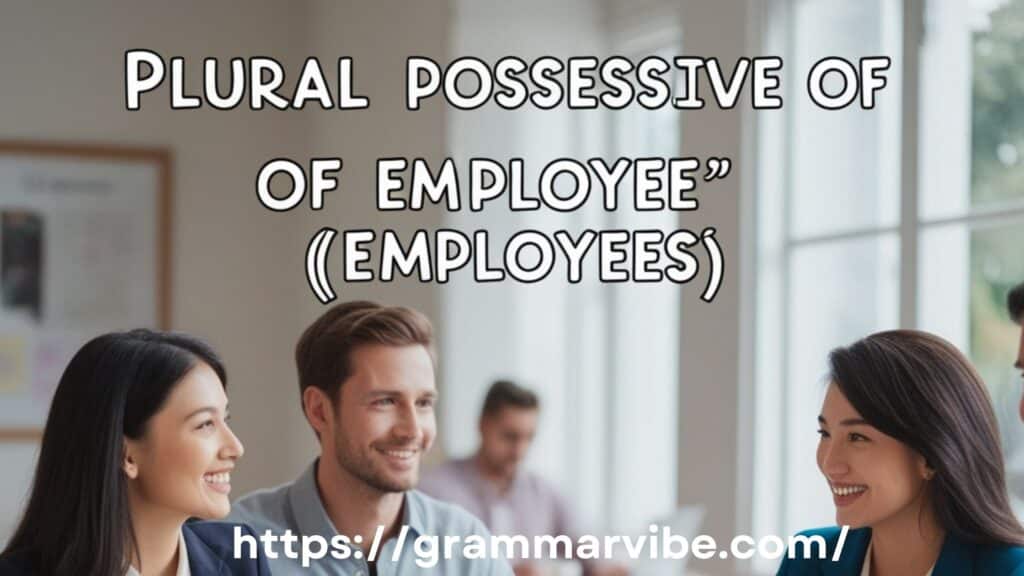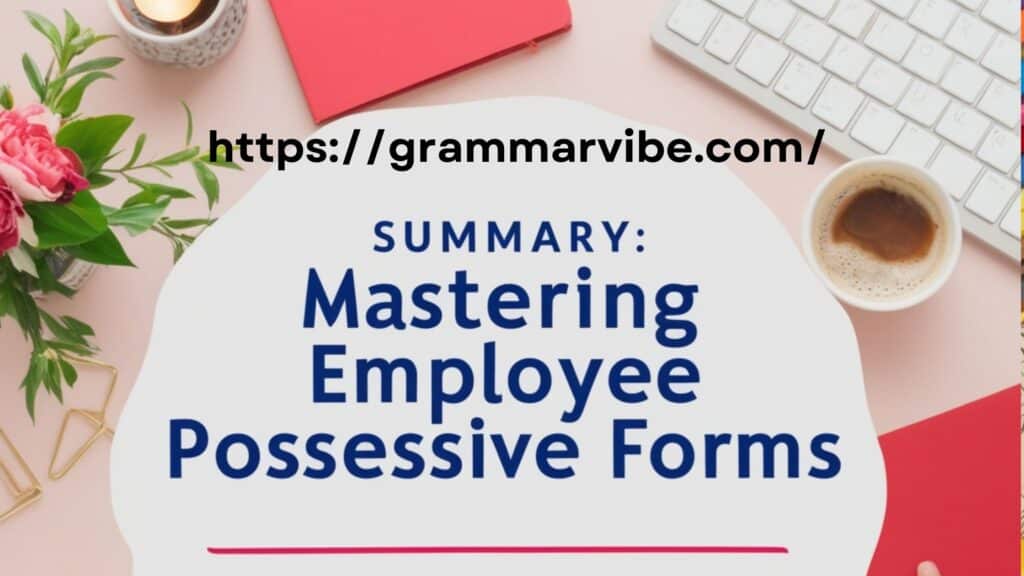Understanding the difference between employee’s, employees’, and employees can be tricky, but it’s essential for clear and effective writing. Each form serves a different grammatical purpose, and knowing when to use the singular or plural possessive can help avoid confusion in both formal and informal contexts.
We will provide clear explanations, and show you how to use each one correctly with examples. By the end, you’ll feel confident in your understanding of these terms and how to apply them in real-life scenarios.
What is an Employee?

Before diving into the different forms, let’s clarify the basic term. An employee is a person hired by a company or organization to perform specific tasks or duties. The plural form of employee is simply employees, meaning more than one worker. For example, “The employees of the company attended the training.”
But when do you add an apostrophe? And what’s the difference between employee’s and employees’?
Explore further: Sister’s or Sisters’ or Sisters
Singular Possessive of Employee (Employee’s)
The singular possessive form of employee is employee’s. You use this form when something belongs to one employee. The apostrophe + “s” shows ownership.
Employee’s Badge
Consider the sentence:
- The employee’s badge was missing from the table.
In this example, we’re talking about one employee and the badge that belongs to them.
Employee’s Desk
- The employee’s desk was organized neatly, with all the paperwork in order.
Again, we’re talking about one specific employee and the desk that belongs to them.
Employee’s Uniform
- The employee’s uniform was freshly pressed for the day.
This refers to a single employee and their uniform.
As you can see, employee’s is used when something is the property of or associated with one employee.
For your interest: Ross’s or Ross’
Plural Possessive of Employee (Employees’)

Now, let’s look at the plural possessive form: employees’. This is used when something belongs to more than one employee. The apostrophe comes after the “s” to indicate that multiple employees own or are associated with something.
Lounge
- The employees’ lounge was recently renovated to include a coffee station and comfortable seating.
Here, the lounge is a space that belongs to all the employees in the workplace, not just one.
Workstations
- All of the employees’ workstations were cleaned over the weekend.
In this case, we’re referring to the workstations of multiple employees.
Suggestions
- The manager appreciated all of the employees’ suggestions during the meeting.
Here, the suggestions come from multiple employees, not just one.
Employees’ Cars
- The employees’ cars were parked in the new garage.
Again, we’re referring to more than one employee, and the cars belong to them collectively.
When talking about something that involves multiple employees, use employees’.
Check out this: Lucas’s or Lucas’
Plural Form of Employee (Employees)
The plural form employees is used when you’re referring to more than one employee but there’s no possession involved. This form is straightforward and doesn’t require an apostrophe.
Attending a Seminar
- The employees attended a seminar on team-building strategies.
Here, employees is simply the plural of employee.
Employees at Work
- The employees were hard at work on their new project.
This sentence uses the plural form to talk about a group of employees.
Employees and Team Spirit
- The company organized a retreat to foster team spirit among the employees.
In this case, employees is again used to refer to a group of people, without any need for possession.
You might also like: Roberts’ or Roberts’s
Employee’s vs. Employees’ vs. Employees: A Quick Recap
Here’s a quick recap to help you remember the differences:
| Form | Example Sentence | Meaning |
|---|---|---|
| Employee | The employee attended the meeting. | Refers to one person who works for a company. |
| Employees | All the employees joined the workshop. | Refers to more than one person working for a company. |
| Employee’s | The employee’s desk was tidy. | Shows possession for one employee. |
| Employees’ | The employees’ lounge was renovated last month. | Shows possession for multiple employees. |
How to Use Possessives in Real-World Scenarios

Scenario 1: Discussing Employee Belongings
When you need to talk about something that belongs to one or more employees, using the correct possessive form is crucial.
- The employee’s belongings were left on their desk.
Here, you’re referring to the belongings of a single employee. - The employees’ belongings were locked in their lockers.
This sentence refers to the belongings of multiple employees.
For your interest: Other Ways to Say “Thank You for Responding Quickly”
Scenario 2: Talking About Employee Performance
When discussing employee performance, the singular or plural possessive can clarify whether you’re focusing on one employee or multiple employees.
- The employee’s performance this quarter has been outstanding.
This focuses on one person. - The employees’ performance as a group exceeded expectations.
This refers to the collective performance of a team of employees.
More Examples of Employee Possessives in Context
Scenario 3: Employees’ Opinions
In a business setting, it’s common to gather feedback from employees. Here’s how you would use each form correctly.
- The manager considered the employee’s opinion carefully before making a decision.
This refers to feedback from one employee. - The HR department reviewed all of the employees’ opinions before changing the policy.
This refers to feedback from several employees.
Recommended reading: Doctor’s or Doctors’
Scenario 4: Employees’ Retreat
Many companies organize retreats to build team spirit and improve collaboration. Here’s how to reference such an event:
- The employee’s retreat was a much-needed break for the overworked staff member.
This refers to a retreat for one employee. - The company hosted an employees’ retreat to promote teamwork and collaboration.
This retreat involves all employees or a large group of them.
Summary: Mastering Employee Possessive Forms

Understanding when to use employee’s, employees’, and employees can be simple once you grasp the basics of singular and plural possessives. When writing about things like an employee’s badge, an employees’ lounge, or employee performance, always consider whether you’re talking about one or more employees and whether possession is involved.
By mastering these forms, you’ll ensure your writing is not only grammatically correct but also clear and professional.

Kyren Paul is an experienced blogger and the creative mind behind “Grammar Vibe.” With a passion for the nuances of English grammar, he brings clarity and insight to everyday language topics, making grammar accessible and engaging for readers of all levels.











Leave a Comment